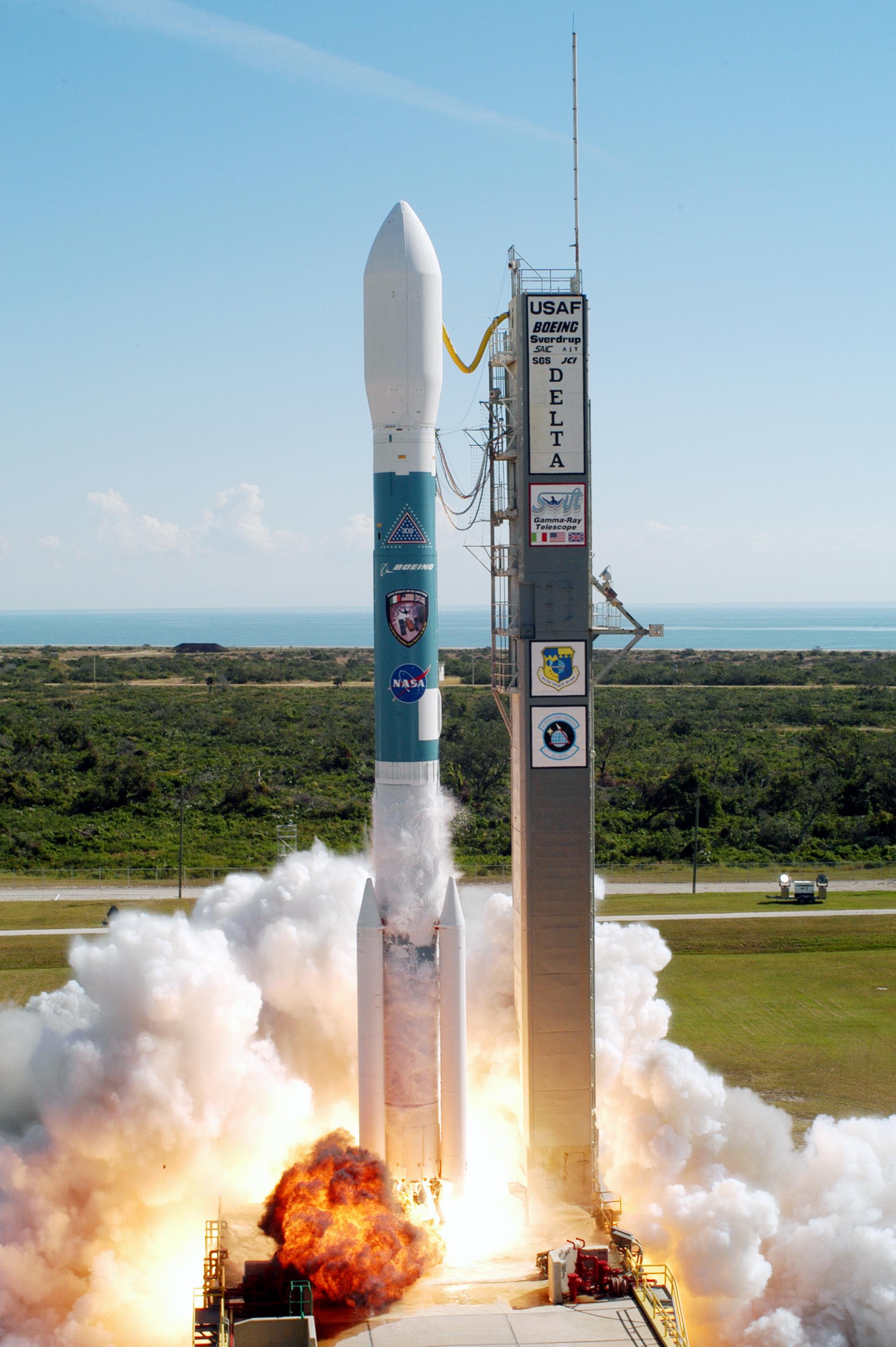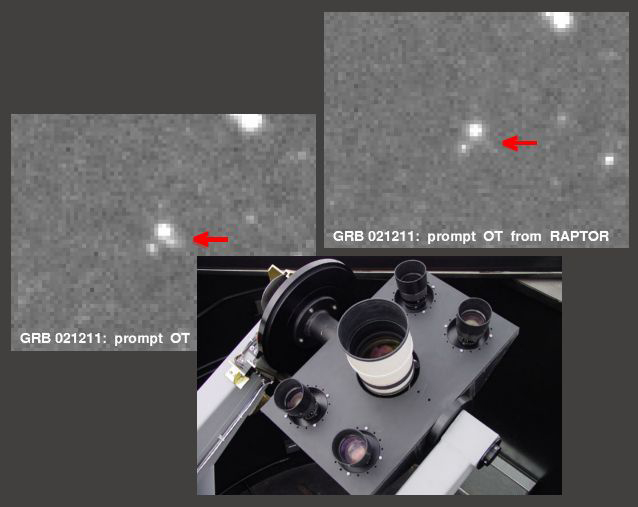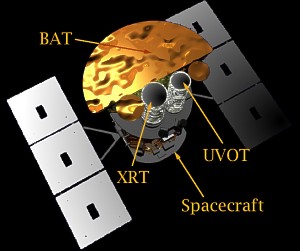Mission Information

A Boeing Delta II launch vehicle blasts off carrying NASA's Swift spacecraft into space from Cape Canaveral Air Force Station. (Credit: NASA)
For over 30 years astrophysicists have puzzled over the origin of gamma-ray bursts (GRBs) – brief but brilliant flashes of gamma-rays occurring about once per day at random locations in the sky.
Some progress was made in 1997 when BeppoSAX, an Italian X-ray satellite, discovered lingering X-ray emission from a GRB called afterglow. Afterglow has since been observed in optical and radio, as well. Since this discovery was made, telescopes observing all different wavelengths world-wide have scrambled to detect GRB afterglow as soon after a burst detection as possible.
In one remarkable case on January 23, 1999, a robotic optical telescope, ROTSE, was able to catch a GRB during the burst of gamma-ray emission. It saw an optical transient source, which would have been visible to the human eye (if you'd been looking at the right spot at exactly the right time).
Another extraordinary observation took place on December 11, 2002, when a burst was imaged in optical a mere 65 seconds after the gamma-ray burst trigger by RAPTOR, a system designed to observe optical transients. These are the only two bursts seen in optical so close in time to the burst's in gamma-ray emission. The left exposure in the image below shows the afterglow 65 seconds after the burst, while the right exposure was taken 9 minutes after the burst. The optical afterglow has noticeably faded. Also shown is one of the RAPTOR units.

RAPTOR Image of GRB 021211. (Credit: P. Wozniak, W.T. Vestrand, et al., RAPTOR Project, LANL)
Swift is an innovative mission designed specifically for GRB science. Swift's three instruments work together to observe GRBs and afterglows in the gamma-ray, X-ray and optical wavebands. The Burst Alert Telescope (BAT) monitors the entire sky to catch a GRB and calculate an initial position. Armed with the position, the Swift spacecraft autonomously slews to bring the GRB into the Swift's X-Ray Telescope (XRT) and UltraViolet/Optical Telescope (UVOT) fields-of-view within 90 seconds. All three telescopes watch the gamma-ray burst and afterglow unfold. Over the next several days Swift returns to the GRB to observe the afterglow's behavior over time.

The swift spacecraft with individual instruments labeled. (Credit: NASA)
Swift is part of NASA's medium explorer (MIDEX) program. It was launched into a low-Earth orbit on a Delta 7320 rocket on November 20, 2004. During its nominal 2-year mission, Swift is expected to observe more than 200 bursts and afterglows, which will represent the most comprehensive study of GRB afterglow to date.
Use the following links (or links in the sidebar) to learn more about the exciting science Swift is doing and the instruments it uses to explore gamma-ray bursts.
- Gamma-ray Bursts
- Spacecraft
- Burst Alert Telescope
- X-ray Telescope
- UltraViolet/Optical Telescope
- Follow-up Observations



